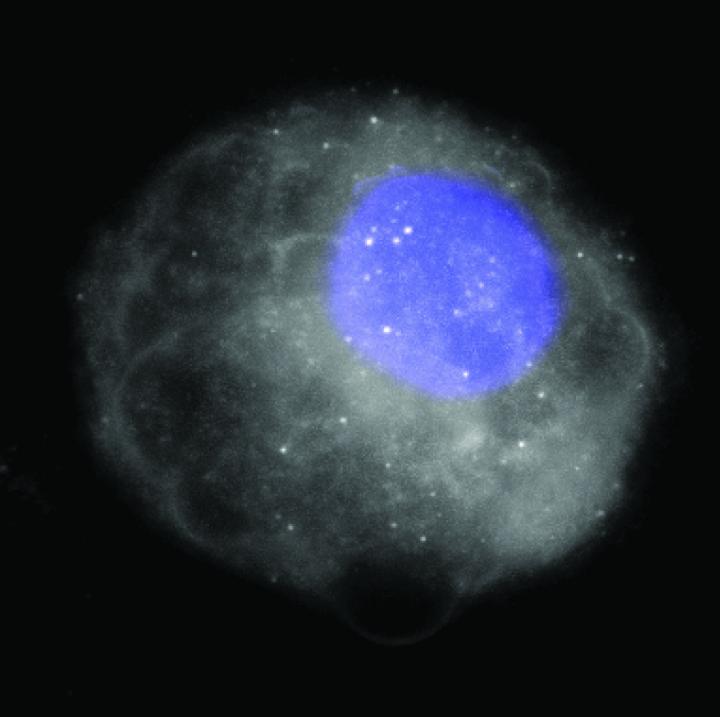A study has shown a new way that brown fat, a potential obesity-fighting target, is regulated in the body.
In an upcoming Cell Metabolism article, researchers examined long non-coding RNA (Ribonucleic acid) in adipose (fat) tissue in mice. Long non-coding RNAs have recently become appreciated as important control elements for different biological functions in the body.
The team created a catalog of 1,500 long non-coding RNA in mouse adipose tissues - which is the most comprehensive catalog ever created of its type. Using the catalog they were then able to identify a specific long non-coding RNA without which the brown fat cell cannot develop properly.

This is an image of fat tissue (white cloud) and its nucleus (in blue). Credit: Alvarez-Dominguez and Bai, et al./Cell Metabolism 2015
Brown fat is currently under intense study for its potential role in obesity prevention. There are two types of adipose tissue found in the human body - white adipose tissue (white fat) and brown adipose tissue (brown fat). Brown fat is needed for heat generation in babies, and it was previously believed that as we grow up, our brown fat disappears. However, it is now clear that brown fat can still develop in adults, where it has been shown to speed up metabolism and burn calories.
"We wanted to investigate what makes brown fat unique," explained Duke-NUS Graduate Medical School Singapore (Duke-NUS)
Assistant Professor Sun Lei. "The mechanisms that drive or guide the development of brown fat will have therapeutic potential, and we are excited to have found such a mechanism. Additionally, this research adds to our growing expertise on obesity and diabetes at Duke-NUS."
The next step before this new knowledge can be applied is to identify such a long non-coding RNA in humans. Researchers and pharmaceutical companies can then test ways to exploit long coding RNA to maximize brown fat production in order to speed up weight loss.






Comments